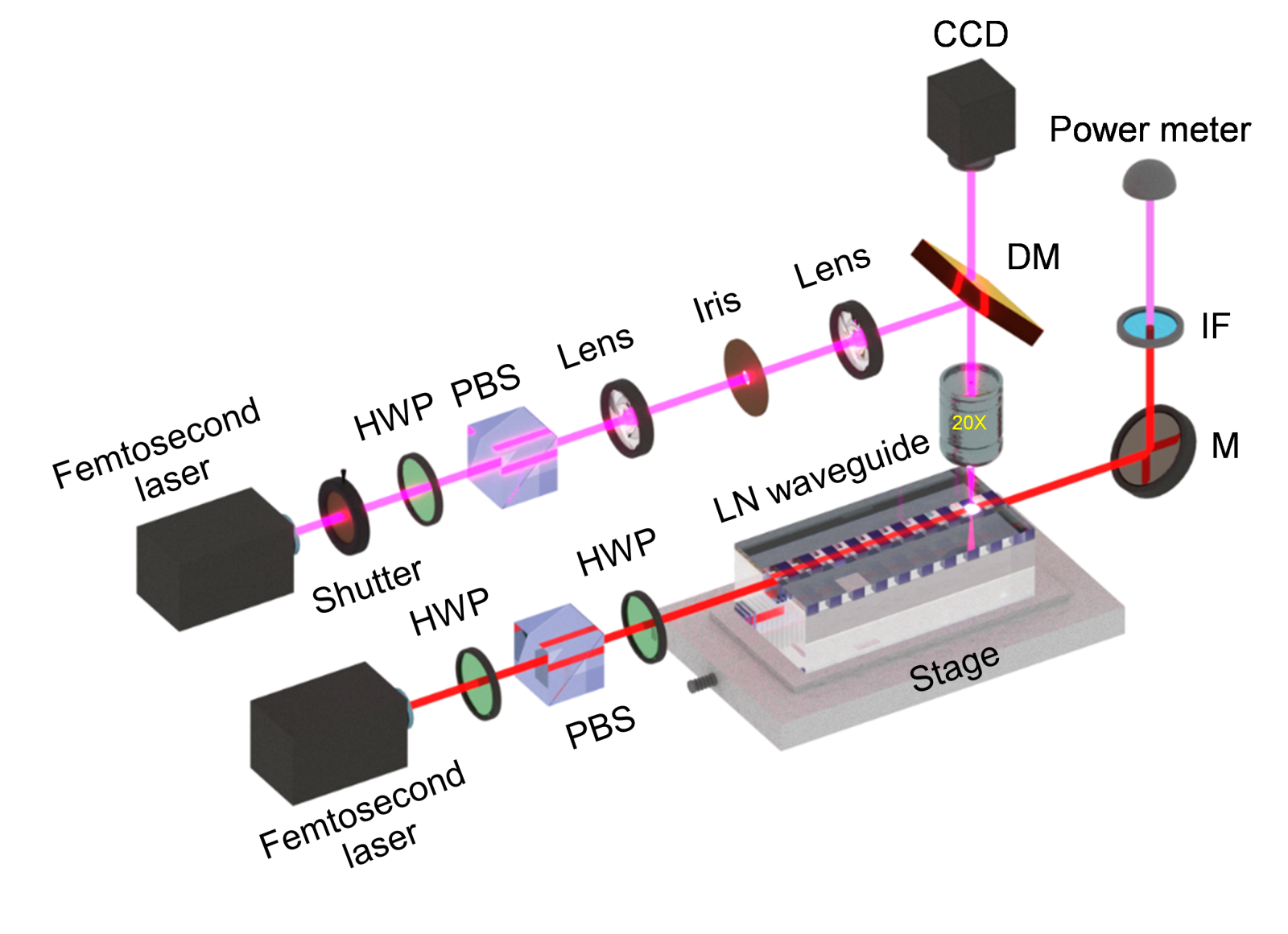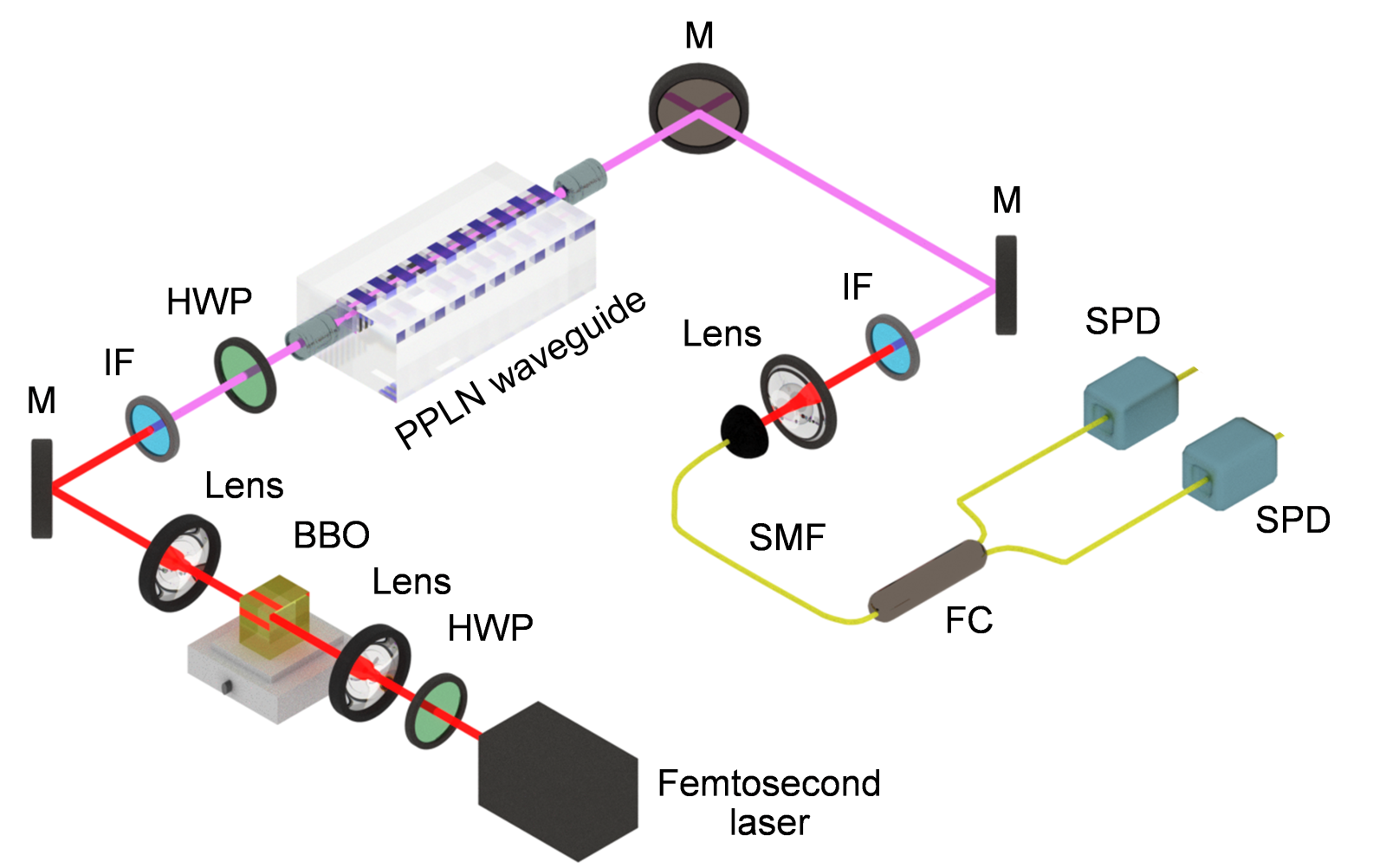Integrated quantum photonic technology exhibits great potential for applications ranging from quantum communications and quantum computation to quantum metrology. Single-mode, high-purity, and integrated sources of single photons and/or entangled photon pairs are necessary for all these quantum protocol. Lithium niobite (LN) integration platforms provide second-order nonlinearity that enables photon-pair generation by spontaneous parametric down-conversion (SPDC). More specifically, periodically poling of LN, also known as ferroelectric domain engineering technique can be applied to realize quasi-phase-matching (QPM) SPDC for generation of correlated photons with higher efficiency.

Experimental setup for femtosecond laser direct writing ferroelectric domain patterns in the Ti-indiffused LN channel waveguide.
The traditional fabrication method for QPM is the electric field poling. The external poling field is applied via patterned electrodes on the crystal surface and the ferroelectric domain switching process always begins with nucleation of inverted domains on the surface. In addition, the mask and lithography are needed to design the poling structure, which are feasible but not ideal for rapid prototyping.
The femtosecond laser provides a flexible method for the fabrication of QPM structures in ferroelectrics. The laser beam can be focused at multiple depths inside transparent medium for fabrication of three-dimensional nonlinear photonics crystals, which are big challenge if using the electric field poling. The femtosecond laser poling offers an ideal technique to construct periodic ferroelectric domain devices, enabling precise control of localized domains for advanced applications in nonlinear beam shaping and holography.

Schematic of the experimental setup used for photon-pair measurements.
Recently, in collaboration with professor Sheng Yan from Australian National University, the research team of the School of Physics from Nankai University led by professor Li Yongnan demonstrate photon-pair sources based on Ti-indiffused LN waveguide periodically poled by a tightly focused femtosecond laser in Chinese Optics Letters, Volume 21, Issue 4, 2023 (F. Dai, et al., Photon Pair Generation in Lithium Niobate Waveguide Periodically Poled by Femtosecond Laser). The laser (central wavelength at 800 nm, pulse width 180 fs, repetition rate 76 MHz, and single pulse energy up to 5 nJ) is used to form the domain inversion in the Ti-indiffused LN waveguide. The average scan speed of the focal spot of the laser beam is about v = 10 μm = s through the waveguide from the −Z toward the Z-surface. The average QPM period is 2.74 μm along the x axis and 1.15 μm along the y axis. The propagation loss of the waveguide is measured to be about 0.1 dB/cm at the fundamental wavelength. A second-harmonic power of 4.4 mW is obtained for input power of 40 mW (peak power is 3.6 kW), and the conversion efficiency is 10.1%. The pair coincidence rate reaches ∼8000 counts per second for average pump power of 3.2 mW. This work first time prove the possibility of application of the nonlinear photonics structure fabricated by femtosecond laser to the integrated quantum source.
Prof. Li Yongnan from Nankai University believes that this method can be used for the periodically polling of the thin-film LN by optimizing the intensity distribution of the focal field of femtosecond laser. In addition, this method can be extended to three-dimensional domain structures, which provide a potential platform for steering of the spatial degree of freedom of the entangled two-photon states.


